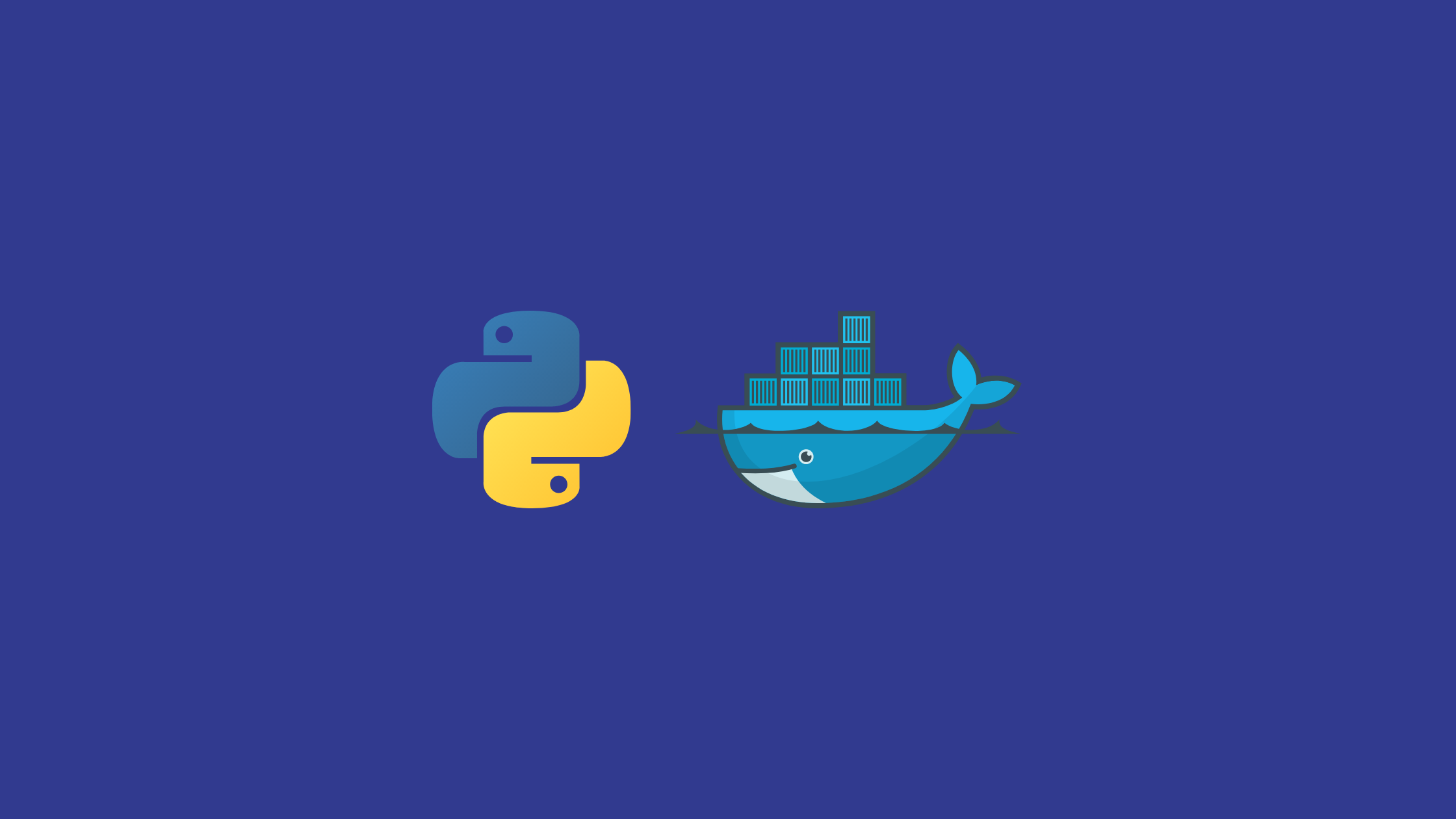Make docker and django work better and together.

🐍
We all know that Django is great for applications even if we want to, with Docker the conversation gets better!
How about I show you an initial Setup for your projects that can not only speed up your development, but also make your environment advanced and complete for your applications?
Interested? So read on and leave the rest to me.
Requirements
- Python
- Docker
Starting ✅
We are going to use a test application to create the development environment, but remember that this setup applies to any project.
Just be mindful of the changes you make.
1 - First, we start a venv enviroment
python -m venv venv && source ./venv/bin/activate2 - Now we install our dependencies ( and don't worry, I'll tell you what each one will do )
pip install django black python-dotenv psycopg2-binaryAnd don't forget to create the dependency files:
pip freeze > requirements.txt- Django --> Our main framework
- black --> Python code formatter
- python-dotenv --> Python-dotenv reads key-value pairs from a
.envfile and can set them as environment variables. - psycopg2-binary --> most popular PostgreSQL database adapter for the Python
Running the project
Tips:
- For MySQL, MariaDB and derivatives types, use
mysqlclient
3 - Let's init our app:
django-admin startproject your_fantastic_name .4 - Creating the .env file:
Go to the root of your workspace and create the .env file with this values:
// App
SECRET_KEY=your_ultra_secret_key
// 1 = True or 0 = False
DEBUG=
// localhost 127.0.0.1 0.0.0.0 ...
HOSTS=
// POSTGRES
POSTGRES_DB=
POSTGRES_USER=
POSTGRES_PASSWORD=
// PGADMIN
PGADMIN_DEFAULT_EMAIL=
PGADMIN_DEFAULT_PASSWORD=
later these values will be useful
5 - Configuring our application:
First let's go to the core of our application, located in the settings.py file and we will add some imports
By default the Path is already imported, but to use our python-dotenv package let's add two more imports:
from pathlib import Path
from dotenv import load_dotenv
import osAnd just below we will use os to configure the project:
load_dotenv()
BASE_DIR = Path(__file__).resolve().parent.parent
SECRET_KEY = os.getenv("SECRET_KEY")
DEBUG = int(os.getenv("DEBUG", default=0))
ALLOWED_HOSTS = os.getenv("HOSTS").split(" ")Tips 2:
- For the people who gonna use Django with html and css, i like to put all the static files into the templates folder
TEMPLATES = [
{
"BACKEND": "django.template.backends.django.DjangoTemplates",
"DIRS": [os.path.join(BASE_DIR, "templates")],
"APP_DIRS": True,
"OPTIONS": {
"context_processors": [
"django.template.context_processors.debug",
"django.template.context_processors.request",
"django.contrib.auth.context_processors.auth",
"django.contrib.messages.context_processors.messages",
]
},
}
]- For who gonna use Rest-Framework, here is my configs for the app:
REST_FRAMEWORK = {
"DEFAULT_PAGINATION_CLASS": "rest_framework.pagination.LimitOffsetPagination",
"PAGE_SIZE": 5,
"DEFAULT_RENDERER_CLASSES": ["rest_framework.renderers.JSONRenderer"],
"DEFAULT_PARSER_CLASSES": [
"rest_framework.parsers.JSONParser",
"rest_framework.parsers.FormParser",
],
"DEFAULT_THROTTLE_CLASSES": [
"rest_framework.throttling.AnonRateThrottle",
"rest_framework.throttling.UserRateThrottle",
],
"DEFAULT_THROTTLE_RATES": {"anon": "15/min", "user": "20/min"},
}6 - Setting up the Database in Django:
In this context and I will exclusively use postgres, to configure the connection just modify the DATABASE object with the following values:
DATABASES = {
"default": {
"ENGINE": "django.db.backends.postgresql",
"NAME": os.getenv("POSTGRES_DB"),
"USER": os.getenv("POSTGRES_USER"),
"PASSWORD": os.getenv("POSTGRES_PASSWORD"),
"HOST": "db",
"PORT": 5432,
}
}More Tips:
- This is optional but recomendy, for storage the Static Files and some other configs for language and more:
LANGUAGE_CODE = "pt-BR"
TIME_ZONE = "America/Sao_Paulo"
USE_I18N = True
USE_TZ = True
STATIC_URL = "static/"
STATICFILES_DIRS = (os.path.join(BASE_DIR, "templates/static"),)
STATIC_ROOT = os.path.join("static")
MEDIA_URL = "media/"
MEDIA_ROOT = os.path.join(BASE_DIR, "media")
DEFAULT_AUTO_FIELD = "django.db.models.BigAutoField"
Docker Setup 🐬
First we need the build for our app, let's create him!
// Image of python with Debian
FROM python:3.9-bullseye
// Set Workdir
WORKDIR /usr/src/app
// Envs for don't generate pycache
ENV PYTHONDONTWRITEBYTECODE 1
ENV PYTHONUNBUFFERED 1
// Some important libs
RUN apt update && apt upgrade -y \
&& apt install gcc python3-dev musl-dev bash build-essential libssl-dev libffi-dev -y
// Upgrade pip, copy requirements and install all the project dependencies
RUN pip install --upgrade pip
COPY ./requirements.txt .
RUN pip install -r requirements.txt
// Entrypoint gonna be useful when we up the container
COPY entrypoint.sh .
RUN sed -i 's/\r$//g' /usr/src/app/entrypoint.sh
RUN chmod +x /usr/src/app/entrypoint.sh
// Copy all the files for the root dir
COPY . .
ENTRYPOINT ["/usr/src/app/entrypoint.sh"]Now we need our compose file to up all the tools and our app:
version: "3"
services:
web:
build: .
container_name: "web-app-server"
command: python manage.py runserver 0.0.0.0:8000
volumes:
- .:/usr/src/app/
ports:
- 8000:8000
networks:
- postgres
env_file:
- ./.env
depends_on:
- db
db:
image: postgres:13.0-alpine
container_name: "postgres-db-server"
volumes:
- postgres_data:/var/lib/postgresql/data/
environment:
- POSTGRES_USER=${POSTGRES_USER}
- POSTGRES_PASSWORD=${POSTGRES_PASSWORD}
- POSTGRES_DB=${POSTGRES_DB}
networks:
- postgres
env_file:
- ./.env
pgadmin:
container_name: "pgadmin-django-server"
image: dpage/pgadmin4
environment:
- PGADMIN_DEFAULT_EMAIL=${PGADMIN_DEFAULT_EMAIL}
- PGADMIN_DEFAULT_PASSWORD=${PGADMIN_DEFAULT_PASSWORD}
volumes:
- pgadmin:/root/.pgadmin
ports:
- "5050:80"
networks:
- postgres
env_file:
- ./.env
depends_on:
- db
volumes:
postgres_data:
pgadmin:
networks:
postgres:
driver: bridgeIf you notice, our compose will be reading our values that we defined in the .env file, like database name, username, password and so on.
If you are not sure which values are defined in the file, run the command docker-compose config in the terminal, it will display the compose with all the values.

And finally, our entrypoint file
#!/bin/sh
if [ "$DATABASE" = "postgres" ]
then
echo "Waiting for postgres..."
while ! nc -z $SQL_HOST $SQL_PORT; do
sleep 0.1
done
echo "PostgreSQL started"
fi
python manage.py flush --no-input
python manage.py migrate
exec "$@"Yea, more tips 😄:
- For security, add the file
.dockerignorefor exclude some folders in the build:
venvNow let's start our app 🎯
All you will need is just to give a little command:
$ docker-compose up
And that's it, you will have uploaded all 3 containers, the database, pgAdmin and your own application, all in a setup that is easy to customize and implement new tools.
In case you are in doubt, "how can I access my application with docker?", simple, with Docker you can do everything!
First type:
$ docker psTake the id of your container and:
$ docker exec -it id_of_container bash
And that's it, you can develop your application in a simple way :)
Now we can see the result!

I hope that with this tutorial I have helped you to make your Django applications with a special touch.
See you next time!
